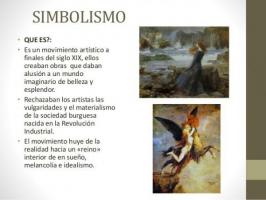The thought of Saint Thomas Aquinas

In this lesson we will talk about the thought of Saint Thomas Aquinas, theologian and philosopher of the thirteenth century and the highest representative of scholasticism. He was appointed by the Catholic Church Angelic Doctor, Common Doctor and Doctor of Humanity. He was a great commentator on Aristotle's work, whose philosophy seemed compatible with Christianity. But not only the stagirite influenced the thinking of St. Thomas. The Platonism of Agustín de Hipona, is also reflected in his ideas, along with the philosophy of Aristotelian authors such as Averroes or Maimonides.
Two of his best known works are, Summa theologiae, a treatise on the Catholic religion that includes his famous five ways to prove the existence of God, and the Summa against gentiles, a request of the clergyman and jurist Raimundo de Peñafort, the same one who brought the Inquisition to the kingdom of Aragon. If you want to know more about the thought of Thomas Aquinas, keep reading this lesson from a TEACHER.
Index
- Reason and faith in the philosophy of Thomas Aquinas
- The distinction between essence and existence
- The problem of the universals
- The five ways to prove the existence of God
Reason and faith in the philosophy of Thomas Aquinas.
To know the thought of Thomas Aquinas, we must know that the debate between faith and reason or between theology and philosophy, will be the central theme throughout the Middle Ages. And, in this context, Thomas Aquinas defended the superiority of the truths of the first over the second.
Namely, philosophy is subordinate to theology, since the latter deals with the most sublime and perfect object of study, God. It is not possible to access God from philosophy, although it can be a tool to arrive at certain truths. In fact, the philosopher assures that there is no contradiction between the truths of reason and the truths of faith.
What is naturally innate in reason is so true that there is no possibility of thinking about its falsehood. And even less is it lawful to believe false what we possess by faith, since it has been confirmed by God. Therefore, since only the false is contrary to the true, as their very definitions clearly prove, there is no possibility that rational principles are contrary to the truth of faith.
Furthermore, he says that if there is any contradiction between the two, it is undoubtedly due to an error of reason, and not of faith. God is perfect and He is not wrong.
The distinction between essence and existence.
What Aristotle, the thought of Thomas Aquinas part of being to develop their philosophy, starting by giving a definition of entity: what is being.
A) Yes, distinguishes the essence of existence, being, in Aristotelian terms, the first power and the second act. Both are independent, and this idea constitutes the core of his metaphysics and of the question of the contingency of objects. God, on the contrary, is not contingent, and that is why in him his essence coincides with his existence. God, the Being par excellence, the absolute being.
The Being of Thomas Aquinas is One (affirmation based on the principle of non-contradiction), as Aristotle's is Truth (all being is susceptible of being known), like that of Saint Augustine, and Goodness, since evil does not exist as entity.
The problem of the universals.
The problem of universals will be the central theme in the theory of knowledge of Santo Tomás and throughout the Middle Ages. Other great thinkers such as Agustín de Hipona, Escoto Eriúgena, Anselmo de Canterbury or Pedro Abelardo, also took sides in this debate.
Thomas Aquinas, following Aristotle, he argued that the mind abstracts the general form (or substantial) of objects, giving rise to the universal (or species). Thus, he studies, as Porfirio would have done previously, the ways of being of the universal:
- Before rem or before the thing. This is, in the mind of God, as creator and model of beings.
- In re or in the thing. What shapes the thing.
- Post Rem or after the thing. Abstractions of real material entities or concepts.
Saint Thomas Aquinas is the patron saint of universities and is celebrated on January 28 and for many intellectuals, his thought is one of the greatest of all time.
The five ways to prove the existence of God.
To finish this summary of the thought of Saint Thomas Aquinas, we are going to talk about the demonstration of the existence of God a posteriori. This is the ontological argument of Saint Augustine:
- First Way or way of movement. Starting from the distinction between power and act, Saint Thomas explains that everything that moves must be moved by another, in a chain of motors which, since it cannot be infinite, concludes that there must necessarily be a first immobile motor and a principle of everything. This first engine would be God.
- Second Way or way of efficiency, Every effect has a cause, and as in the previous way, the chain cannot go back to infinity. Thus, there must be a first cause of everything that there is and that it itself is uncaused. This first cause is God, as the creator of the universe.
- Third Way or way of contingency. All things are contingent, since they can both exist and not exist. Essence and existence do not coincide in things, but they do coincide in God, that is, the necessary Being.
- Fourth Way or way of the degrees of perfection. In the world there are more or less perfect things, but without reaching the maximum degree. There must be a perfect being, by virtue of which a hierarchical order is established. God is the perfect being, the best, the truest.
- Fifth Way or way of the purpose. All natural beings are directed to an end, so there must be a pure intelligence that orders everything, leading it to its end.
If you want to read more articles similar to The thought of Saint Thomas Aquinas, we recommend that you enter our category of Philosophy.



